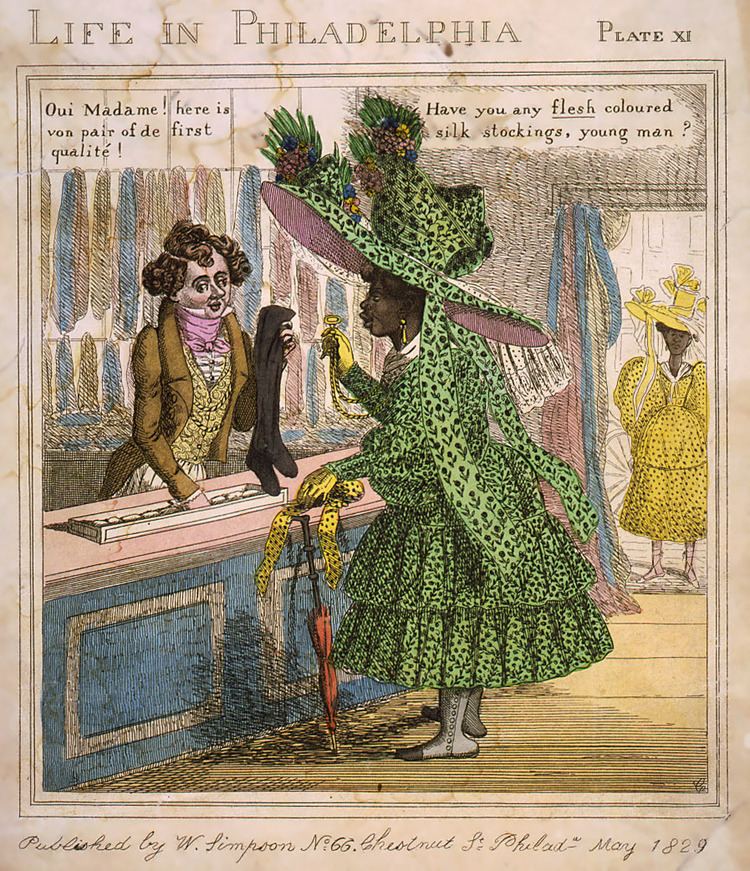 | ||
Life in Philadelphia was a series of cartoons created by Edward Williams Clay from 1828-1830. Modeled after George and Robert Cruikshank's Life in London series, it consisted of 14 aquatint engravings: 4 depicted white people and 10 depicted black people.
Contents
Background
The cartoons satirized the fancy dress, the manners, and the dialects of Philadelphians. The subject matter included absurd scenes of courtship and displays of etiquette on the street, at residences, at society balls, and in allegory; fashion; promenades; the abolition of slavery; the election of President Andrew Jackson; tea parties; and depictions of African Americans at work. These cartoons were very popular: they were imitated by artists in places such as New York and London, and their images of hyper-elegant blacks became a standard stereotype in the minstrel shows of the mid- to late-nineteenth century.
Taken as a whole, the cartoons reflect Clay's anti-abolitionist feelings. Life in Philadelphia is held in the collection of The Library Company of Philadelphia.
Examples
All Pictures have been taken from The Library Company of Philadelphia.
Plate 11 was drawn by E. W. Clay. and published by Wm. Simpson in 1828. The caption says: "Have you any flesh coloured silk stockings, young man? Oui Madame! here is von pair of de first qualite!"
Plate 14 was drawn by E.W. Clay and published by S. Hart in 1830. The text reads: "What you tink of my new poke bonnet, Frederick Augustus? I don't like him no how, 'case dey hide you lubly face, so you can't tell one she nigger from anoder."
Grand Celebration was drawn in London as part of the expanded Life in Philadelphia series published there, which was originally based on E.W. Clay's caricatures and included versions of several of them. Taking its title from an earlier satire unconnected with Clay and probably inspired by the abolition of slavery in the British colonies in 1833, it is credited to an I. Harris.
